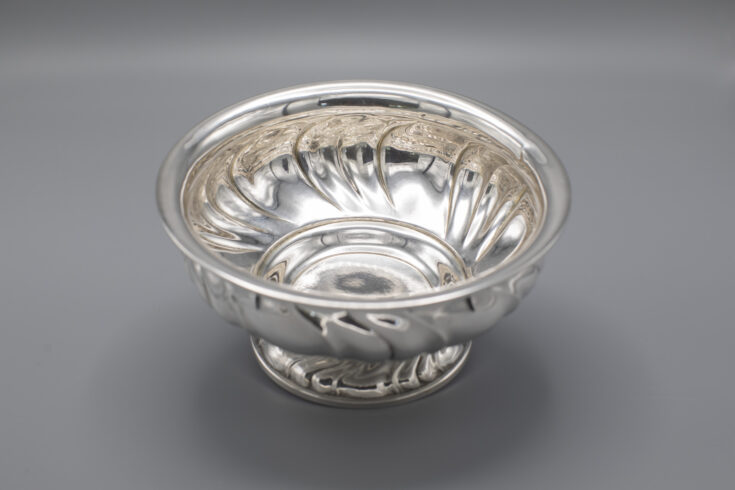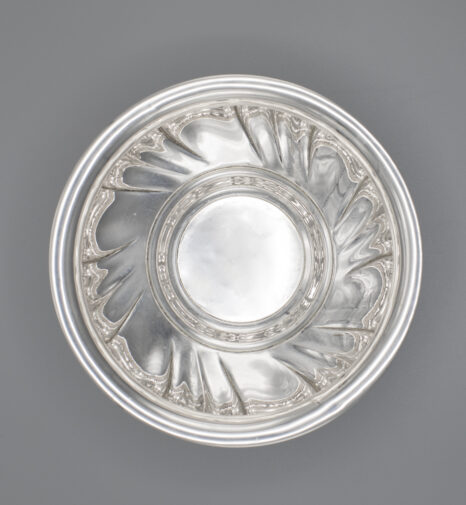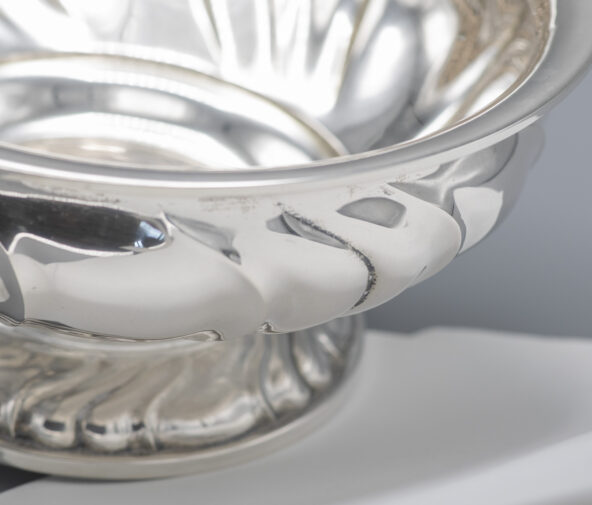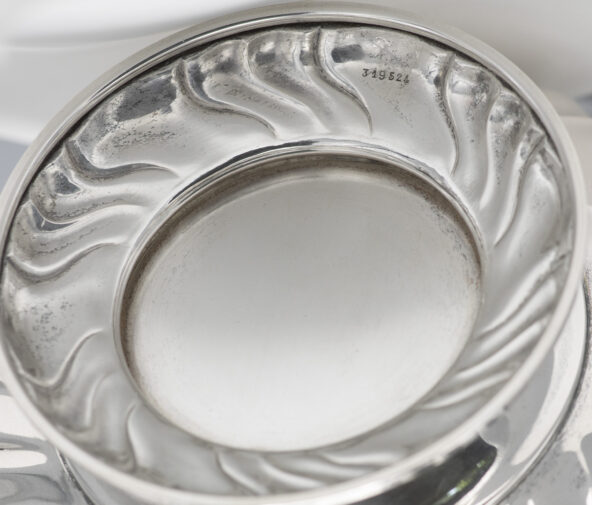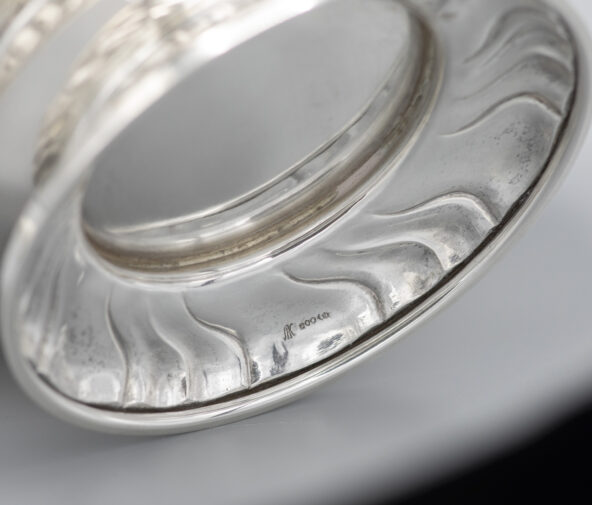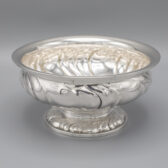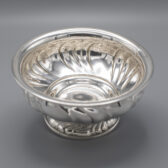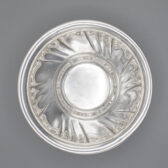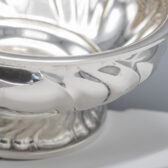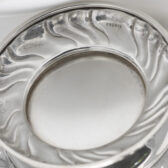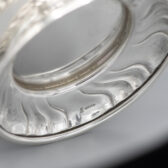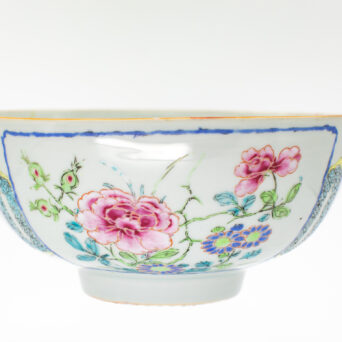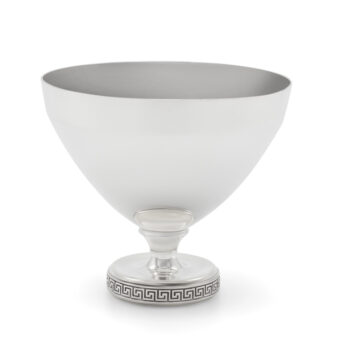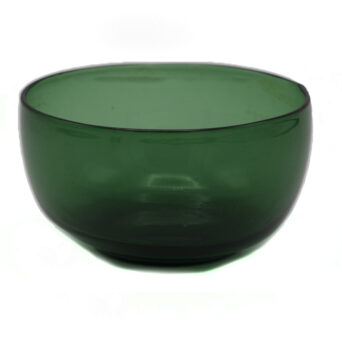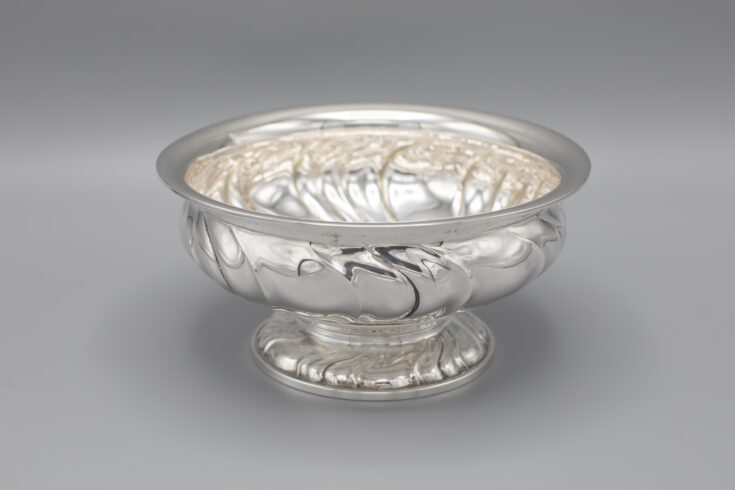
German Silver Bowl
In the world of antiques, silver that is German in origin generally falls under the term “Continental Silver”. This term refers to silver that does not follow the English Sterling standard of purity. It actually is a very large category that encompasses not only German silver but also Austrian, Italian, Portuguese, Spanish and Eastern European silver items from all periods. Essentially, any silver that is not English, French or American is considered Continental Silver. German silver is a fascinating category in itself, with a rich tradition and its own unique forms.
The German hallmarking system was unified in 1888, adapting the national mark “Crescent and Crown” and indicating the fineness of silver. While the minimum fineness for English silver in 925/1000 – the fineness of sterling silver – the minimum German silver fineness is 800/1000. However, 830. 835, 900, 925 and 935 purifies are also quite often used.
Our German 20th century Silver Bowl is made in a handsome classical form, with a fluted swirl design that resonates throughout the body. Attractive in design which helps create an elegant and sophisticated look, this Bowl would look lovely anywhere it resides.
